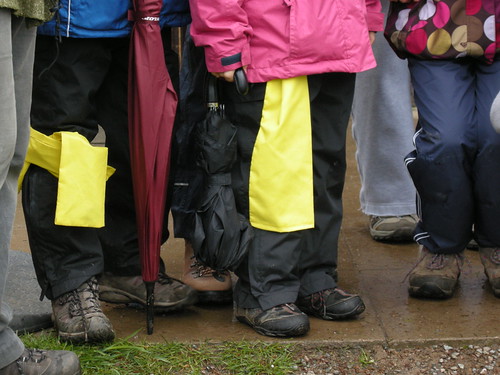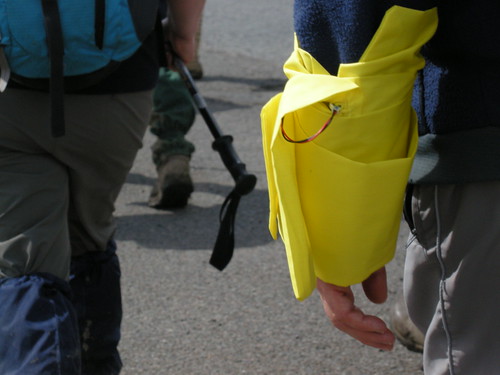Landscape-reactive sashes
Supported by the current residency with Fermynwoods Contemporary Art I developed these sashes to further explore ideas of group identity and interconnectedness. This follows on from the recent residency with Phoenix Square and feeds in to the ongoing series of research projects relating to Colony.
The basic principle was to have a group of people all linked visually through the wearing of the sashes, but also connected through a network formed by radio transceivers built into the sashes.
One member of the group also wears a microcontroller unit that analyses discrepancies in GPS data and broadcasts instructions to the sashes to vibrate differently in accordance with the results. In this way, everyone who accepts the invitation to become a member of the group is able to feel what the broadcaster senses.
The use of coloured armbands to signify the wearer to be a member of (or outcast from) a particular group is something we humans have been doing for a long, long time. Some research into the subject quickly seemed to suggest that there wasn’t any colour that didn’t have a loaded history so I chose to reclaim my yellow on the grounds that it did what I wanted it to do.
The yellow of the sashes makes the group visible as they move through the landscape. This weekend we’ve mostly been moving through and around fields of rapeseed.
In this context of distributed senses, I’m also interested in a reference to the armband worn in Germany and Austria to signify visual impairment:
Those dots could very easily be modified into a network diagram, right?
~~~
So, for the last few days I’ve been inviting people to walk with me as part of a group.
You can wear the sash in any way that seems appropriate to you – on your arm, on your wrist, around your tummy, over your shoulder, around your leg… I impose a few restrictions; mostly just that the radios are on the top and the vibration motors are near your skin. It’s nice if the yellow fabric is visible, but keeping the electronics dry takes precedence, so this weekend quite a few were worn under waterproofs!
Together we have been learning about what restrictions the system puts on us: how far radio waves travel; how radio waves do not go around particular corners/bends; how long batteries last for etc
Thanks to everyone who joined in and took part.





































